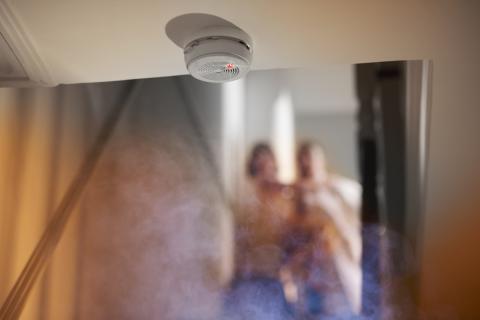Fire Safety for the Whole Family
September 10 is Grandparents Day, a great time to think about keeping grandparents—and their grandchildren—safe at home.
In the U.S. today, multigenerational living is on the rise, due to the higher cost of housing, student loans, and the more challenging career path faced by younger adults today. Money isn’t the only driver; many families enjoy having several generations under the same roof. Our longer lifespan means more families are providing care for elderly family members. And these grandparents and great-grandparents might babysit even while receiving help with their own care needs—a win-win for many families.
If yours is one of the over 4 million intergenerational households, it’s important to consider the safety needs of both children and the elderly. This includes fire safety, say experts from the U.S. Consumer Product Safety Commission (CPSC). “Home is a sanctuary for these families. But let’s not forget that home is the place where people are at greatest risk of fire.”
The CPSC urged members of multigenerational families to learn what to do in case of fire, and to take the following precautions:
- Make sure your home has smoke alarms. You need a smoke alarm on every level, inside each sleeping room, and outside each separate sleeping area. Interconnect the alarms so when one sounds, they all sound.
- Test your alarms at least once a month. Press each test button to make sure it is working.
- Practice your fire drill. Plan your home escape. Share the plan with everyone in the family and guests.
- The plan should include two ways out of every room and an outside family meeting place.
- Smoke alarms may not wake up children. Older adults may not hear the smoke alarm. Assign someone to help children, older adults and people with disabilities escape.
- Make sure your home has bright lighting in stairways to prevent falls during a fire drill.
- Remove clutter to prevent trips and falls and allow for a quick escape.
- Install handrails along the full length of both sides of the stairs.
- If there is a fire, get outside quickly and stay outside. Then call 9-1-1.
- If you can’t get outside, call 9-1-1. Let the fire department know you can’t get outside. Wave a light-colored cloth or a flashlight from the window.
- If there is smoke, use your second way out. If you must escape through smoke, get low and go under the smoke.
